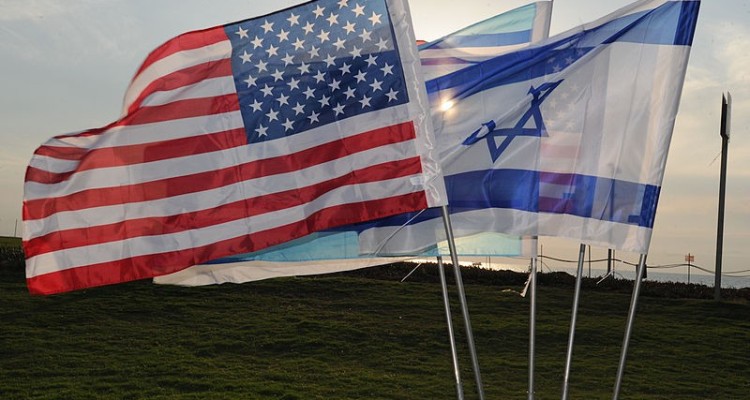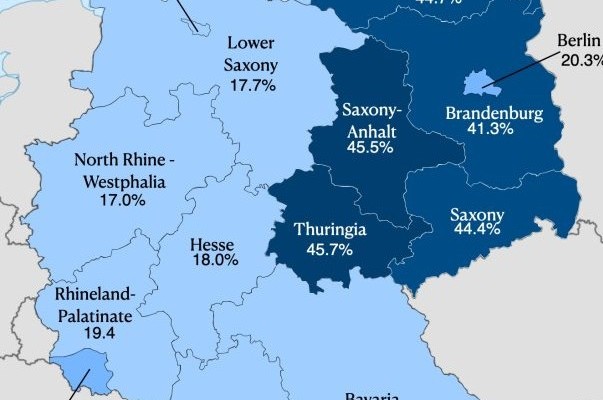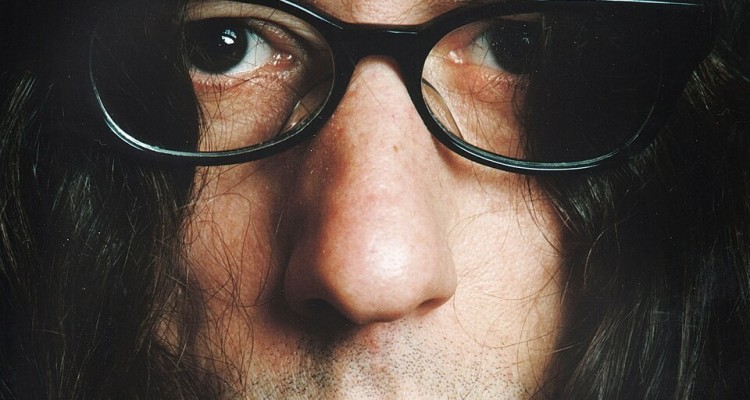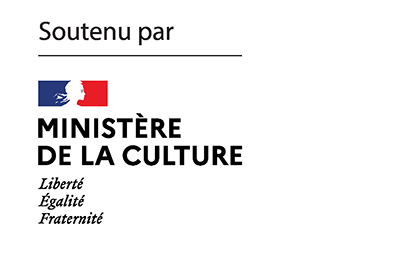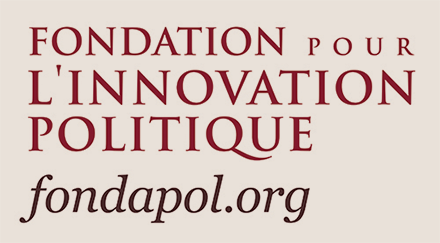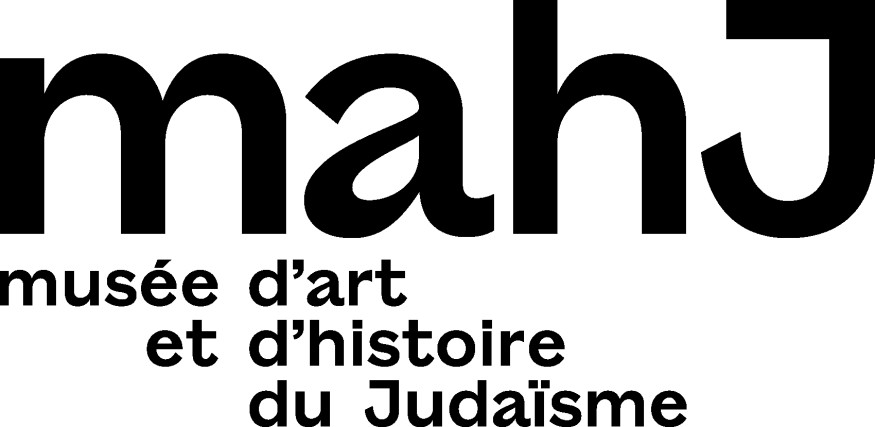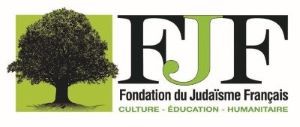Jonas Pardo has been an activist for several years within the radical left, where he has long hidden his Judaism. Following the attack on the Hyper Cacher, he decided, with a handful of other activists, not to let the anti-Semitism that sometimes manifests itself and the denial that often surrounds it continue. This was the first step in a process that would lead him to create a training course on the fight against antisemitism specifically designed to address the left. In this article for K. he tells his story, details his training workshop and the various reactions it provokes.
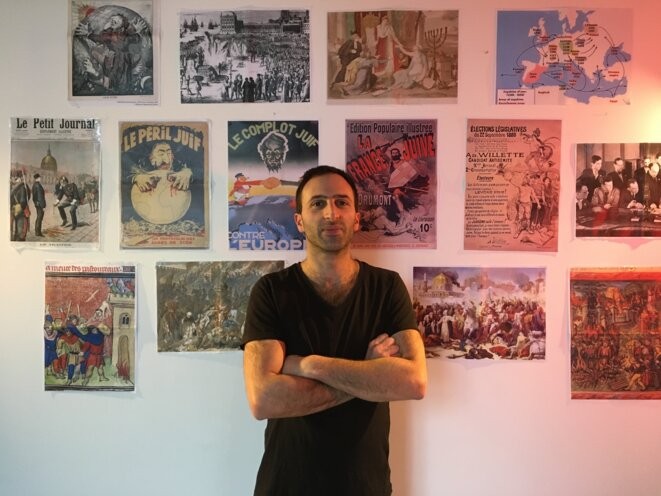
On the afternoon of Friday 9 January 2015, I received a call from my mother. As soon as I picked up the phone, she asked me if I had watched the news. I told her that I had, that I had seen the Charlie Hebdo massacre of last Wednesday. She explains that she had planned to do her Shabbat shopping earlier but at the last moment decided to go to the post office before going to the Hypercasher at Porte de Vincennes. Her words are confused and I don’t understand their meaning. She tells me that the police are everywhere, that she wanted to do her shopping but that the area is blocked off. The link between words and ideas escapes me and I detect frustration in her voice: I don’t understand what she is telling me. At her request, I watch the live news. I discover that a hostage situation is underway in the supermarket where she goes every Friday afternoon. Everything comes to light and it’s a shock. My thoughts and words become confused. I become aware of an obvious reality: without a letter to drop off at the post office, my mother would be the victim of an anti-Semitic massacre.
In the wake of denial, the renewed fight against antisemitism on the left
Such unrealistic situations are difficult to understand and explain. In the radical left-wing circles where I was then active, I could hardly find the words to calm my fear and anger. My daily life there is constantly merged with the struggle, without the respite necessary to stabilise my emotions. Preparations for demonstrations follow press conferences, which in turn precede night actions, collective writing, court appearances, support for comrades who are in prison or who have been attacked by the police on the occupied premises. In other words, my story about the supermarket and the letter to the post was not put on the agenda of the many weekly meetings or assemblies. But there is another reason for this silence. As I will read later in a brilliant article in the magazine Vacarme: antisemitism is a non-issue for the lefts.
In the social movement and in a part of the trade union and political lefts, the debate was about the meaning to be given to the “Je suis Charlie” rally and about what appeared to be a necessity: the refusal to mute the democratic debate in the name of the imperative of national unity. The press releases called for the refusal of any amalgam between Muslims and jihadist terrorists, as well as the prevention of the Islamophobic fallout that was to come. But all too often these analyses lacked a simple condemnation of the hatred directed against Jews. In some cases – the worst ones – the reference to the attack on the unfortunate customers of the Hypercasher was simply a reminder of the condition of the Palestinians. Thus, the Israeli government was accused of “taking advantage of fear” to encourage Jewish emigration, of being responsible for antisemitism in France by ricochet effect, or even of being suspected of having organised the killing through its secret services: minimisation, denial or justification of antisemitism. In the “best” case, the antisemitic killing was seen as a news item that should not provoke any particular reaction. As in this Jewish joke, where a sign at the entrance of a shop reads “No Jews or cyclists allowed”. A customer disturbed by the announcement enters and asks the owner: “But… why cyclists?
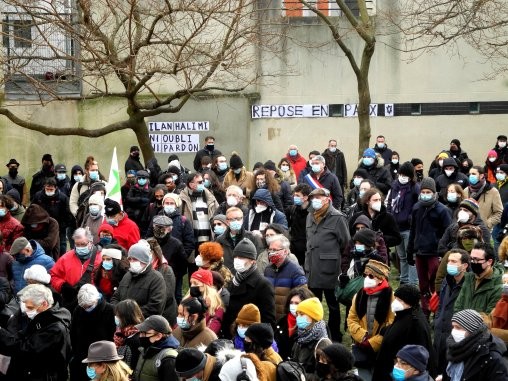
In the wake of the January attacks, three authors published, in response to the Parti des Indigènes de la République, “Pour une approche matérialiste de la question raciale” (For a materialist approach to the racial question) and several of us, in search of fresh air, contacted them. A small circle of reflection and self-formation was then organised. Our profiles are diverse – members of the armed forces or autonomous, hotel workers or farmers, teachers, authors of novels or academics – but what unites us and makes this small group original, made up of Jews but not only, is the fact that we think about the fight against antisemitism within the organisations of the social movement. Even within trade unions, feminist collectives, self-managed social centres or even ZADs. There, we try to understand how anti-Semitic acts have been increasing since the 2000s, in a context of a general worsening of racist acts, but also why radical lefts minimize, deny or even justify anti-Jewish acts and threats. It is also a time to meet with groups or individuals who work on these issues, from Ligne de Crêtes to the Memorial 98 association. All these small groups have little echo in our political camp, but they have the merit of thematising for several years conspiracy and negationism on the left, the competition between anti-racisms or the penetration of Dieudonic theories in the protest movements. It was also at this time that new Jewish voices appeared, in particular the Juives et Juifs Révolutionnaires (JJR) or the Juif·ves VNR, with whom we shared the feeling of urgency to take up the fight against antisemitism. These meetings will later lead to the constitution of the Réseau d’Actions contre l’Antisémitisme et tous les Racismes (RAAR).
Educating the left to recognise and confront antisemitism
Within the social movement, I realise that antisemitism is mostly based on two misconceptions. The first one is linked to an anti-Zionist culture that is based on a principled anti-nationalist position and/or an anti-colonial identity affirmation rather than on a solid knowledge of the Israeli-Palestinian conflict. Indeed, few activists on the left who claim to be “anti-Zionist” are really capable of giving a precise definition of the word “Zionism”. The second misconception is based on a lack of interest and a profound lack of knowledge of the history of the Jewish people; Jewish identity is often perceived as an uninteresting bondieusery in the light of the hegemonic atheism of these circles. However, since the Shoah, antisemitism is no longer an openly claimed project. It is often expressed in a concealed way, so that to identify it, one needs a certain amount of historical knowledge, which the militants of the lefts, convinced that antisemitism is only residual or that it can only be the prerogative of the nationalist right, do not care about. As a consequence of these unthinking assumptions, antisemitic tropes are flourishing in the radical lefts. This phenomenon concerns me and leads me to want to fill a gap on the left, to disarm defensive reactions and to ensure that antisemitism is recognised and fought by those who claim to be part of the anti-racist movement.
It is in this context that I have built a training course on the fight against antisemitism specifically for the left. In its complete formula, over three half-days, it aims to make participants understand the historical processes that led to the creation of the different forms of antisemitism in order to name them precisely so as to know how to argue and fight them. The historical presentations are based on images – iconographies, engravings, paintings, or caricatures – which allow for an understanding of the evolution of hatred of the Jews. From economic anti-Semitism to conspiracy theory, from racial anti-Semitism to Holocaust denial, comparisons are made between images of yesterday and today.
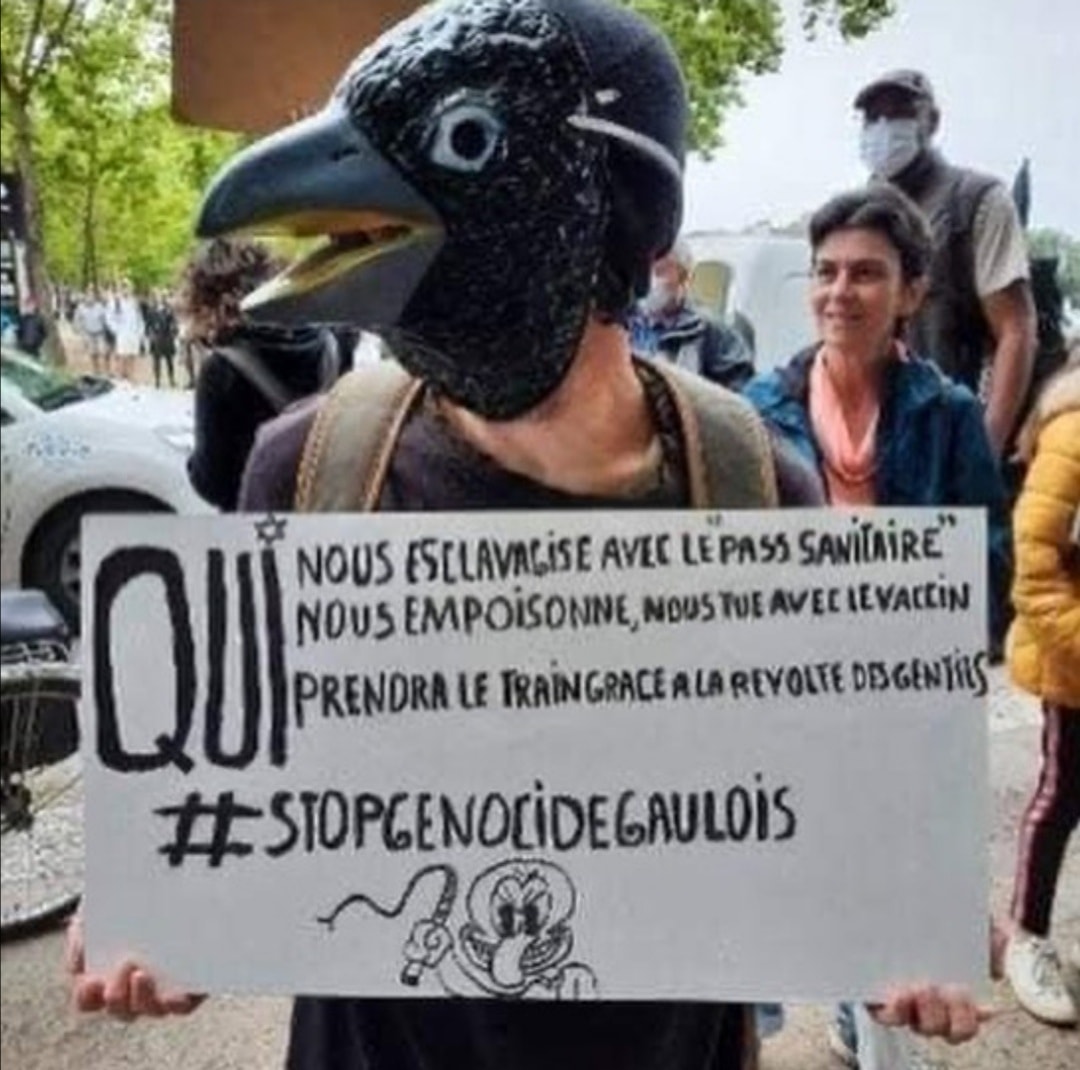
One of the first images I exhibit serves to show the cryptic nature of contemporary antisemitism. It is a picture taken during a demonstration against the « pass sanitaire ». It shows a person wearing a bird mask carrying a sign that reads: “Who enslaves us with the pass sanitaire? Who is poisoning and killing us with the vaccine? Who will take the train thanks to the revolt of the good guys? #stopgenocidegaulois”. I ask the participants to give me an adjective to describe this demonstrator. ” Wacky, weird, confused, crazy… ” are often the answers that come out at this moment. I then explain the content of the sign: the reference to General Delawarde’s Jewish plot, the historical Christian accusations of poisoning the wells, the genocidal threat which becomes clearer when we know that the word “gentile” means “non-Jew” and its justification by the accusatory inversion of the slogan “#stopgenocidegaulois”. It is a demonstration of extreme violence against Jews that is difficult to detect at first glance. At the end of the workshop, the participants are able to analyse and describe similar situations.
A case study
In the chapter on the beginnings of racial antisemitism in Inquisitional Spain, the participants were often struck by the similarity in the representations of Jewish men and women with witches. It is above all the engravings and drawings of the pyres and the pointed hats, the pileus cornetum, that produce this astonishment. The history of the witch-hunt is much studied in feminist circles, since it corresponds to a significant episode in the history of the institutionalisation of patriarchy. I have noticed that the Malleus Maleficarum – The Hammer of the Witches – is generally known, while the Estatutos de Limpeza de Sangre – The Statutes of Blood Purity – are much less known, even though they precede it in the Inquisition’s hunt for heretics. Having studied these statutes in religious school in my Jewish history classes, I had not realised that they were not part of the national education curriculum. I discovered that for some people, a whole part of the political culture was reinforced in the training, as they realised the continuity between the hunt for Jews and the hunt for witches. These reactions made me realise that many of the accusations against Jews and witches were similar: the occult crypto-Judaic practices blamed on the Marranos and the Witches’ Sabbath; the accusations of communion with the devil; the preparation of potions from Christian blood during the plague epidemic of the fourteenth century; the poisons and curses attributed to witches; the barbaric acts on Christian children as well as the acts of fornication with animals. Jews and witches are approached through identical representations: duplicity, conspiracy, dissimulation, hypocrisy, lies, inhumanity, the relationship to evil forces, etc.
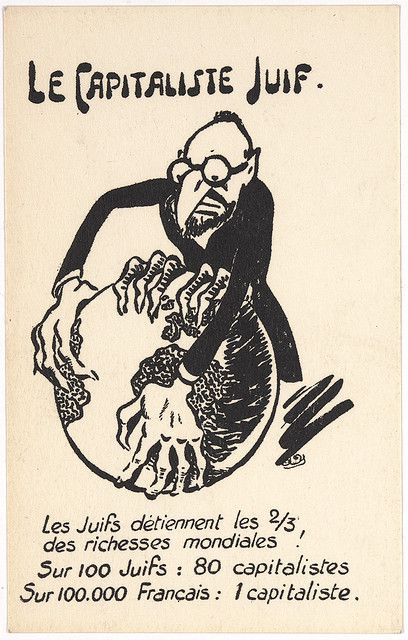
The chapter on the industrial revolution and the spread of economic antisemitism is an important part of the workshop. We read antisemitic quotes from theorists of communism, anarchism and socialism: from Marx to Bakunin, from Proudhon to Louise Michel. We then study Boulangism and the role that the lefts played in this first national-socialist synthesis in France and during the Dreyfus Affair. At this point, I propose to analyse a collection of anti-Semitic caricatures I have put together and compare them to some of the posters, slogans, puppets or banners seen in recent demonstrations. As members of the camp that claims to be anti-racist, our concern is obviously the defence of Jews as individuals, in their physical and mental integrity, and of Jews as a national minority, who should be able to believe and practice as they wish. But the issues also go beyond these questions as we identify antisemitism and conspiracy as common and growing pitfalls in social struggles. Not only because they constitute a truncated critique of economic domination, but also because they form ideological bridges with the “anti-system” pseudo-criticism of the far right. Truncated because they place the responsibility for the deterioration of living and working conditions on identified individuals – the ‘elites’ for example – rather than on a totalising social system, capitalism. As soon as social criticism becomes binary by opposing “the workers”, “the people” to “the bankers” or “the globalists”, antisemitism looms large. We saw this during the Yellow Vests movement with the obsession with denouncing the Rothschilds on many roundabouts. In addition to the anti-Jewish hatred that this denunciation implies, it is a set of watchwords of the lefts that is to be questioned. These problems of personalising economic domination or unilateral criticism of finance have so far met with little response from the left. Already, during the movement against the El Khomry law, it was the silence of the unions during Dieudonné’s tour of the picket lines and the distribution of the quenelle. An indifference, or even a certain benevolence, towards what is perceived as a symbol of anti-system rallying had taken place. It was initially understood as an “anti-colonial” gesture, since it was addressed “to the Zionists”, but it represented an inverted Nazi salute, concentrating in itself negationism, anti-Semitism and homophobia.
Jews and Zionism: Kezaco?
The workshop starts with some elements of definition of the word “Jew”. After explaining the complexity of what this name covers in history and some contradictory theses, I propose a definition of “Jewish people” by evacuating the racial sense of the notion of “people”, i.e. a group that would be linked by blood, that would have the same genetic origin. I use this notion in the sense that the individuals who make up the Jewish people perceive and subjectivise themselves as belonging to a group that shares sacred texts, a language, and crossed historical destinies. A common history most frequently composed of exile and persecution.
Several participants, in different workshops, questioned this notion of “Jewish people” by referring to the historian Shlomo Sand and his book How the Jewish people was invented. In this book, the author intends to tackle the narratives that trace a continuity of lineage between the Hebrews of biblical history, the Judeans of ancient times for whom archaeological traces are available, and the contemporary Jews. Sand’s thesis aims to highlight the mending of history in the Israeli nationalist narrative and shows that it is impossible to claim that Jews are directly descended from Abraham. This book is an anti-Zionist reference since it attacks the elements of discourse of certain currents of Israeli nationalism that make the presence of the Hebrews in the Middle East during antiquity a justification for the presence of the Jews in Israel today. However, if the nationalist argument is fallacious, so is its challenge. Where the author should conclude from his demonstration that no people exists, he restricts – ideologically – his anti-nationalist critique to the Jewish people and Israel alone; the fact that all the world’s nation-states, from France to Algeria, from the United States to Russia, forge myths capable of justifying the feeling of national belonging is not mentioned. In my training, I try to point out the problem of Sand’s biased demonstration, namely that his thesis about the non-existence of the notion of peoplehood seems to apply only to the Jewish people.
When I tell the story of Zionism, Theodore Herzl and the first Zionist Congress in Basel, several participants are astonished and even confused. One participant confided in me as an aside that she thought that “Palestine had been given to the Jews by Europe after the war to serve as an outpost for Western colonisation”. As I bring up the issue of Zionism just after the chapter on The Protocols of the Elders of Zion, I jokingly reply: “If there is one case of an international project to establish a Jewish government for which Jews are really responsible, it is the independence of the State of Israel! This confused – even mystifying – narrative of the history of Zionism as the armed wing of European colonialism, still propagated by some anti-imperialist circles, has a long life. In November 1975, the United Nations General Assembly Resolution No. 3379, entitled “Elimination of All Forms of Racial Discrimination”, declared: “Zionism is a form of racism and racial discrimination”. This definition was only revoked in 1991 (resolution 46/86). I recall the history of these theories of Zionism defined as a “Western colonial project”, which were forged in post-Stalin Russia, within the studies of “Zionology”, in the context of the Cold War and which then spread to the anti-imperialist movements, through the countries aligned with the communist bloc.
Contemporary antisemitism: how to explain it to the left?
Contemporary antisemitism is only dealt with in the workshops that take place over several days. I consider that it is necessary to know the history of the making of the different forms of antisemitism – from Christian anti-Judaism to Soviet anti-Zionism – before entering into the different theories qualifying its current forms. In addition to deciphering the statistics and several studies on contemporary antisemitism, the body of legislation on racist offences and the battles over the definition of antisemitism, we look back at the major cases of recent years, especially the murders of Jewish people – and the non-reactions on the left. I also offer a critical assessment of the theories of contemporary antisemitism. On the one hand, the right-wing theory of the “new antisemitism”, summarised in a column published in Le Parisien in 2018, which makes young people from the suburbs and imaginary “Islamo-leftists” the new propagators of anti-Jewish hatred and calls for a rewriting of the Koran. On the other hand, the theory that I call “substitution and ricochet”, widespread among radical leftists, and theorised in Enzo Traverso’s The End of Jewish Modernity, which postulates that anti-Semitism has been replaced by Islamophobia and that expressions of violence against Jews are simply a reaction of suburban youth to events in the Middle East.
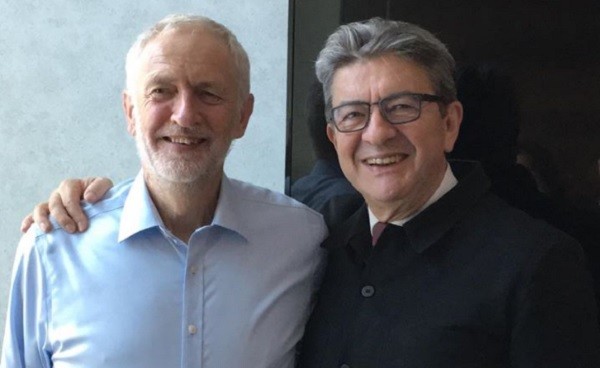
A common idea on the left is the assumption that the accusation of antisemitism is a tool of the right to discredit dissent, social movements and political opponents in general. This is a classic defensive mechanism that I enjoy questioning. When this topic comes up, I ask for a specific example of a case where this process has been mobilised. So far, the answers have been: Jeremy Corbyn, Jean-Luc Mélenchon, Taha Bouhafs and Gérard Filoche. We then open cases that I have prepared, since they are cases that reveal the lack of understanding of antisemitism on the left. I am also amused to recall that historically the opposite has been true, as the left has often been accused of “Judaizing”, of being under Jewish influence, rather than of being antisemitic. After having studied the accusations in detail, having returned to “who said what”, and having pointed out the weaknesses of the explanations in the media treatment of these cases, we ask ourselves about the conditions of forgiveness towards those who have made problematic statements. The question is first: forgiveness to whom? And secondly, who would agree to forgive? Without providing definitive answers, we can formulate the hypothesis that a necessary (but not necessarily sufficient) condition is that of a three-step process: sincere apology, temporary withdrawal from public debate, and presentation of a process to understand and explain the problem. In cases of accusations of antisemitism, the debate is often about the intentions and respectability of the wrongdoer. This is a diversion from the real issue, namely the explanation of the fault itself. Hurtful words do not have to be automatically forgiven. The Gérard Filoche affair is quite representative of this issue, especially as he recently supported Corbyn’s appearance as part of the France Insoumise candidates’ campaign.
Another trapped rhetoric is the denunciation of the “double standard”, the idea that cases of antisemitism would be more denounced when they involve non-white personalities than white personalities. I show quite easily, by comparing the negationism of the young Yann Moix to that of Medhi Meklat, that this rhetoric leads directly to the claim of “antisemitism for all” rather than to a will to fight antisemitism wherever it comes from. In the same vein, we also discuss the denunciation of the supposed “state philosemitism”; the idea that the government would opportunistically display a love of Jews in order to better discredit Muslims and the fight against Islamophobia. This idea, which claims to be at odds with the mechanics of the competition of anti-racist struggles, in reality only reinforces it, since it advocates putting obstacles in the way of the struggle against antisemitism. It also reinforces the conspiracy theory of power being “under Jewish influence”, when it does not lead to a claim of antisemitism as a legitimate governmental criticism
From relief to struggle
The explosion of conspiracy theories during the COVID-19 pandemic and their adoption by alternative health circles, by a group of political ecologists and by many recognised intellectuals of the radical left – such as the sociologist Monique Pinçon-Charlot in the documentary Hold-Up – seemed to mark a turning point in the awareness of the importance of antisemitism on the left. During the period of the lockdowns, an anti-fascist collective in Tours asked the Juives et Juifs Révolutionnaires (JJR) for formation in the fight against antisemitism. It was in this context that the first stones of this training were laid. I then strengthened and improved the training as requests were received. Activists from associations, politics, anti-racism and trade unions, but also journalists, artists and academics… today, nearly 300 people have attended this training: employees of Mediapart, participants in the seminar of the Crises et Critiques publishing house, members of the Longo Maï agricultural cooperative or the organisers of the “Antiracism and Solidarity” campaign in Toulouse Often unsettled by the content of the training and impressed by the size of the gap to be filled, the participants have so far given very positive feedback. An intervention with EELV during the summer days of the ecologist party opened up the possibility of training for NUPES candidates who signed the charter proposed by the working group “fight against antisemitism”. Would the lefts like to recover from their delay in the fight against antisemitism?
After the training, many people asked me if I was thinking of creating other training courses on two subjects that I mentioned without going into detail: the Israeli-Palestinian conflict and the history of resistance to anti-Semitism. Above all, when I give a workshop, I frequently see the Jewish participants get agitated and sigh with relief, as if an abscess seems to be bursting at the seams in the circles they frequent. I understand this feeling. I myself hid my Jewish identity from my comrades for many years; until the Hypercasher attack which led me to abandon the closeted strategy. The feeling of liberation comes from this: finally putting words to a taboo.
